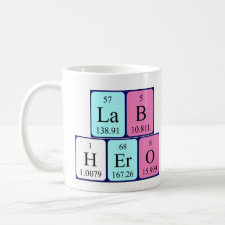
Authors: Yang JJ, Li Y, Wang JC, Sun XL, Cao R, Sun H, Huang CN, Chen JP
Article Title: Molecularly imprinted polymer microspheres prepared by Pickering emulsion polymerization for selective solid-phase extraction of eight bisphenols from human urine samples.
Publication date: 2015
Journal: Analytica Chimica Acta
Volume: 872
Page numbers: 35-45.
DOI: 10.1016/j.aca.2015.02.058
Alternative URL: http://www.sciencedirect.com/science/article/pii/S0003267015002378
Abstract: The bisphenol A (BPA) imprinted polymer microspheres were prepared by simple Pickering emulsion polymerization. Compared to traditional bulk polymerization, both high yields of polymer and good control of particle sizes were achieved. The characterization results of scanning electron microscopy and nitrogen adsorption-desorption measurements showed that the obtained molecularly imprinted polymer microsphere (MIPMS) particles possessed regular spherical shape, narrow diameter distribution (30-60 μm), a specific surface area (SBET) of 281.26 m2 g-1 and a total pore volume (Vt) of 0.459 cm3 g-1. Good specific adsorption capacity for BPA was obtained in the sorption experiment and good class selectivity for BPA and its seven structural analogs (bisphenol F, bisphenol B, bisphenol E, bisphenol AF, bisphenol S, bisphenol AP and bisphenol Z) was demonstrated by the chromatographic evaluation experiment. The MIPMS as solid-phase extraction (SPE) packing material was then evaluated for extraction and clean-up of these bisphenols (BPs) from human urine samples. An accurate and sensitive analytical method based on the MIPMS-SPE coupled with HPLC-DAD has been successfully established for simultaneous determination of eight BPs from human urine samples with detection limits of 1.2-2.2 ng mL-1. The recoveries of BPs for urine samples at two spiking levels (100 and 500 ng mL-1 for each BP) were in the range of 81.3-106.7% with RSD values below 8.3%
Template and target information: bisphenol A, BPA, bisphenol F, bisphenol B, bisphenol E, bisphenol AF, bisphenol S, bisphenol AP, bisphenol Z
Author keywords: Molecularly imprinted polymer microsphere, Pickering emulsion polymerization, Solid-phase extraction, Bisphenols, human urine



Join the Society for Molecular Imprinting

New items RSS feed
Sign-up for e-mail updates:
Choose between receiving an occasional newsletter or more frequent e-mail alerts.
Click here to go to the sign-up page.
Is your name elemental or peptidic? Enter your name and find out by clicking either of the buttons below!
Other products you may like:
 MIPdatabase
MIPdatabase









